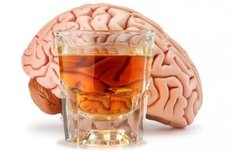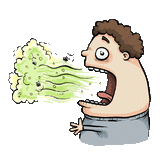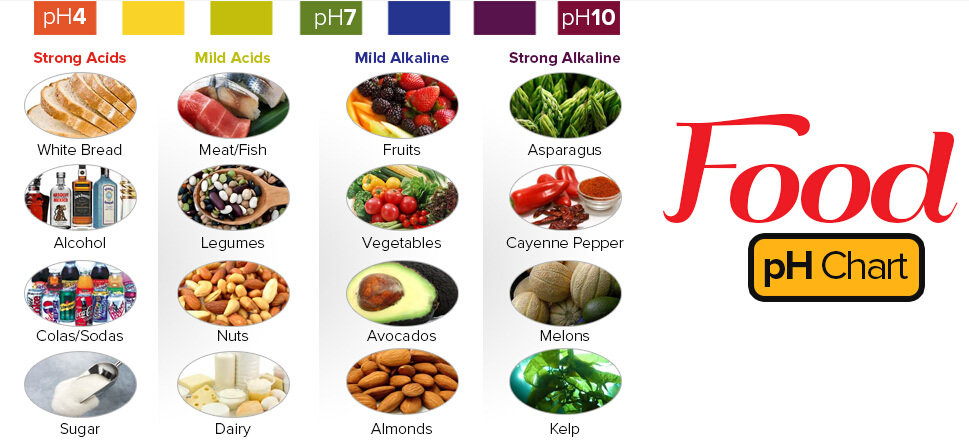
 smells associated with sour and acidic substances such as vinegar, fermenting milk or vegetables, wine or lemon. Can be pungent and sharp as Formic acid and Capric acid in goats’ milk, vinegary as acetic and propionic acid, or sourish and cheesy as isovaleric acid responsible for "locker room" odor, "dirty socks" smell and stinky feet. Some acidic breath or body odors are associated with yeast infections, cystic fibrosis and cancers, but it could also be a side effect of diet, medications and microbial imbalance (skin and gut flora)
Comments
 Urges and powerful desire to consume alcohol. According to one study, the very smell of alcohol is likely to make it harder for individuals to control their craving. Genetic makeup only accounts for half of addiction to consumption of alcoholic beverages, There are also countless environmental factors that can contribute. This includes accessibility of alcohol, work, stress, relationships, abuse and peer pressure.  Strong, acrid, pungent odor easily recognizable in cleaning products like Windex, vinegar, cat urine, chicken manure and, for some people, sweat. Gaseous amines possess a characteristic ammonia smell, liquid amines have a distinctive "fishy" smell. Human breath may have an ammonia-like odor (also described as urine-like or "fishy") in people with chronic kidney failure, uremia and other stages of renal disease. It occurs due to nitrogen-containing compounds, namely amines dimethylamine (DMA) and trimethylamine (TMA). Disturbances in the metabolism of amines may be also observed in epilepsy (increased 3-methoxy-4-hydroxyphenylglycol in urine), Parkinson's and dementia (deficient turnover of amines in the brain). Ammonia-smelling urine could mean dehydration or bacterial infection.  Bad breath, fetor oris or halitosis is a symptom when a noticeably unpleasant odors are exhaled in respiration. Types of odors depend on the food eaten (such as garlic, onions, meat, fish, and cheese), hydration, body mass, smoking, alcohol consumption and other exposures. Low calorie dieting leads to acetone-like odors. Diseases associated with unpleasant breath include liver (fishy), kidney failure (ammonia-like), cystic fibrosis (acidic). Aging breath could produce cardboard-like smell resembling stale beer. About 20% of the general population are reported to suffer from foul-smelling breath to some degree. 5‑72% of people feeling that they have bad breath, have no genuine halitosis. 90% of those who is diagnosed with halitosis have it because of their oral bacteria below the gum-line and on the back of the tongue. The remaining 10% is accounted for by many conditions, including disorders in the nasal cavity, tonsil stones, sinuses, throat, lungs, esophagus, stomach, pancreatic insufficiency, food sensitivities or metabolic disorders like TMAU.  The unpleasant smell of human body usually associated with stale perspiration. Many organic and inorganic substances, byproducts of human and microbial metabolism, are released in the person's sweat, breath, urine and other fluids and gases, giving off a strong smell. Odors could be caused by disease (for example, diabetes leads to sweetish odor; kidney: ammonia-like; TMAU: dead-fish, urine-like or fecal; liver: sweet, mousy and fishy odors), infection (e.g., blue-green pus caused by Pseudomonas aeruginosa: grape-like; TB: tar-like; Scrofula: stale beer, yellow fever: butcher's shop), metabolic disorders or temporary problems (issues in cholesterol metabolism: rubber-like; menstrual period: tinny), imbalance or overgrowth of gut microbiota, hormonal imbalance, allergies, diet and medications, prior exposures to strong smells or poor hygiene. See also Aurametrix summaries for Acidic smell; Ammoniacal odor; Bad breath; Burning smell; Chemical odor; Fatty odor; Fecal odor; Fishy smell; Foot odor; Musty odor; Old book smell; Rancid butter odor; Salty odor; Sulfur odor; Sweetish odor; Vaginal odor; Wet dog odor.  Smoky smell resembling burnt substances. Burning smell could be an olfactory hallucination or a real smell indicating a problem in the environment or human body. Could be a part of olfactory aura and the most common smell reported before a migraine episode (putrid smoky odors or scent resembling smoke, burnt plastic, burning wood, burnt toast or cigarette smoke). Other less common smells include toxic-smelling aromas, sewer-like stenches and decomposed garbage. Chemical substances associated with burning smells include sulfur dioxide and volatile hydrocarbons. The smoky odor character is most consistently associated with hydroxy and methoxy indanones and partially with methyl and methoxy phenols. Burnt odors are associated with furans and alkyl benzaldehydes. The oxidized oily character is usually ascribed to alkenones, dienones, hydroxy cyclocarbonyls, and indanones. Irritation factors seem most frequently to be associated with the lower molecular weight phenols. Some benzeldehydes and methoxy benzenes may also contribute to this sensation. While some unsaturated aldehydes contribute to a portion of the exhaust odor complex, the most abundant exhaust aldehydes do not appear to contribute significantly. Neither sulfur nor nitrogen containing species contribute to the smoky-burnt odor complex and exhaust odors. Ethyne, ethene and benzene were found to make up well over 80% of the non-methane hydrocarbons for efficient flame combustion of wood. The proportions for low-temperature smouldering are similar to those of environmental tobacco smoke. The hydrocarbons from wood burning differ from those in traffic-polluted urban air by higher proportions of ethene and alkadienes and lower proportions of alkanes and alkylbenzenes which are emitted as unburnt petrol components. Ethyne may be a suitable tracer hydrocarbon for emissions from efficient wood-burning installations. The high proportions of the genotoxic hydrocarbons ethene, propene, 1,3-butadiene and benzene are of concern with respect to health hazards  plastic-like odor or smells like industrial strength cleaner, bathroom cleaner, kitchen cleaner, sulfurous and medicinal. Examples of compounds with chemical odor are methyl-p-xylene, (Z)-2-penten-1-ol and fucoserratene that smell like plastic, methanethiol and dimethyl sulfide - that could smell like gasoline. Isoprene in breath associated with problems in cholesterol metabolism could smell like new rubber tubing.  trust or faith in yourself (a feeling of self-assurance arising from one's appreciation of one's own abilities or qualities), another person (belief htat s/he has the ability to succeed at something) or a thing (the feeling of being certain that something will happen or that something is true). Self-confidence (vs cockiness and arrogance that is different from true self-assurance.) is connected to happiness and is a quality one can develop, but building it takes time. What makes people confident: Women 1. A new haircut 2. A sunny day 3. Walking in heels 4. Learning a new skill 5. Booking a holiday 6. Shaved legs 7. Lipstick 8. Glowing tan 9. Little black dress 10. Designer perfume Men 1. A sunny day 2. Freshly shaved face 3. A new suit 4. Freshly brushed teeth 5. A nice smelling aftershave 6. Being praised at work 7. A new hair cut 8. Sleeping in freshly washed sheets 9. Learning a new skill 10. Someone agreeing to go on a date  intense desire for something acidic like lemons (pH=2.4), cranapple juice (pH=2.9), pickles (pH=5-5.5), tomatoes (pH=4.3-4.9), mustard (pH=3.5-6.0), vinegar (pH=2.4-5). Could be physiological or psychological - because of seeing or smelling something acidic and tasty. Since many acidic foods help digestion (for example, yogurt can aid in digestion of lactose, acetic acid in apple cider vinegar sometimes brings relief to people with certain digestive disorders) it is possible that your body needs this kind of help. In rarer cases, extreme cravings for lemon or tomatoes could be caused by iron deficiency. You might also be craving vinegar to break down excess calcium or get extra potassium.  a powerful desire to eat or chew ice (pagophagia). It is often associated with iron deficiency anemia, although the reason is unclear. Pagophagia and other pica cravings (appetite for non-nutritive substances is often seen in pregnant women, small children, stressed individuals and those with developmental disabilities such as autism. |
Categories
All
|
